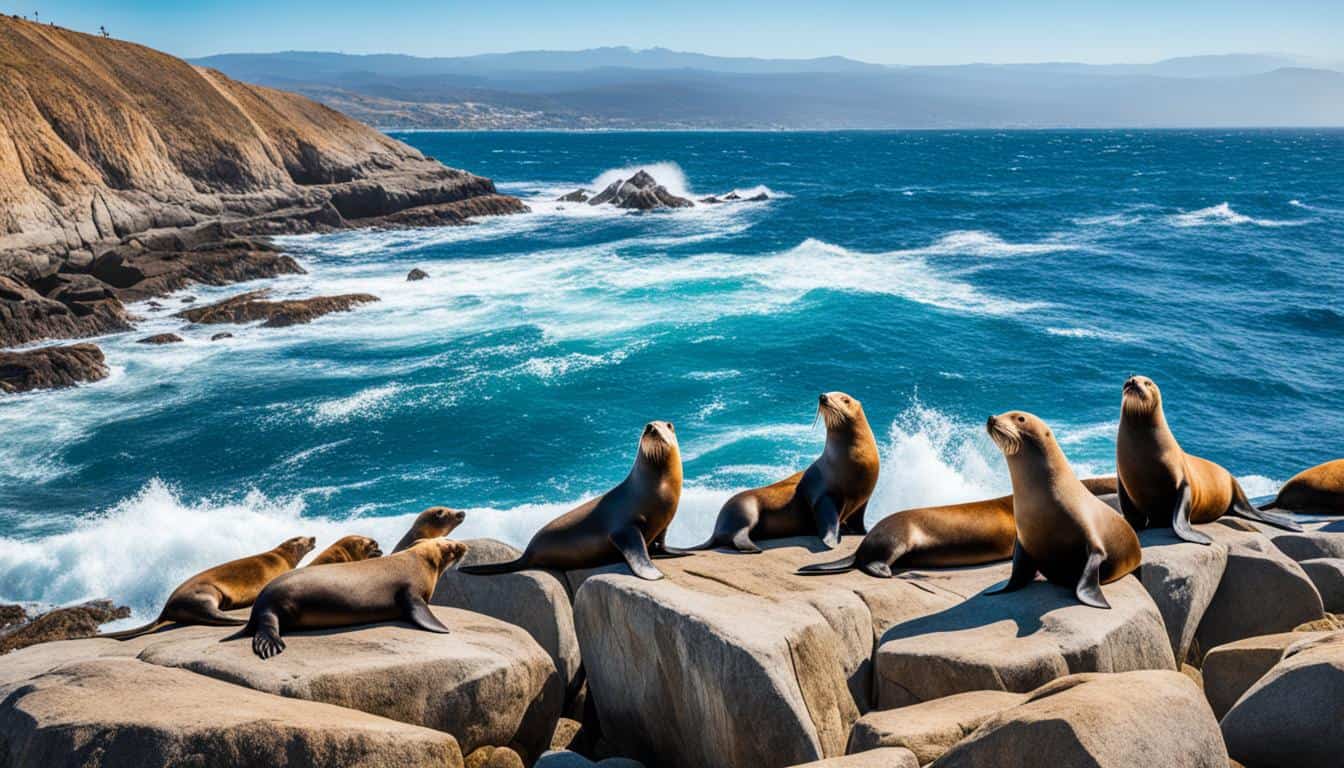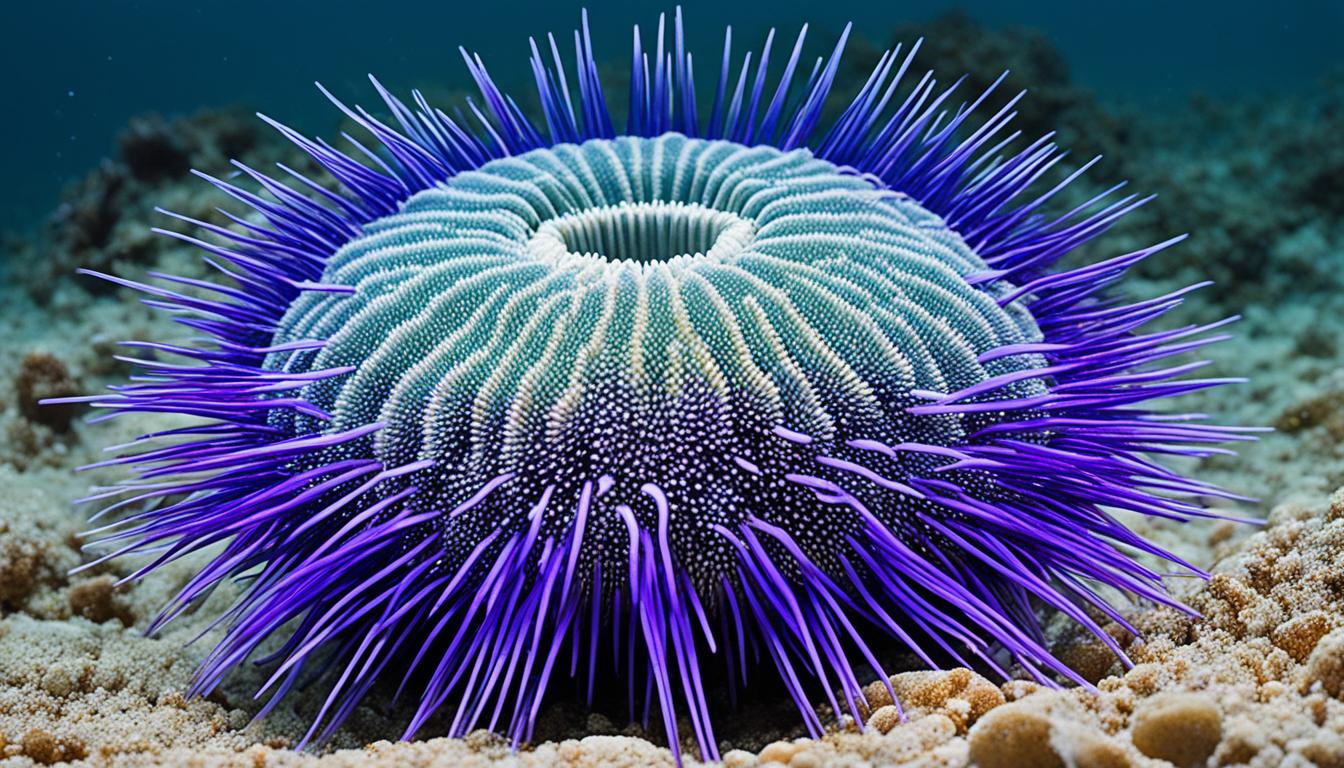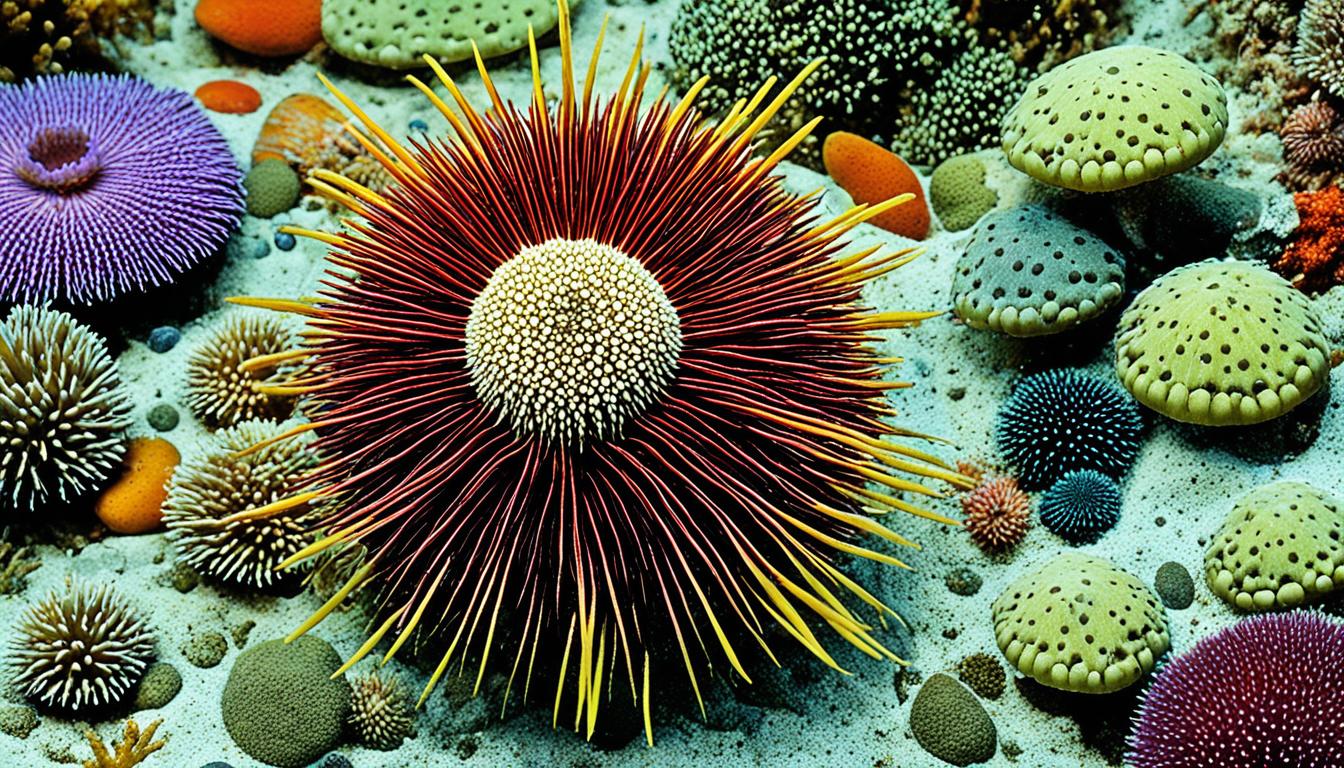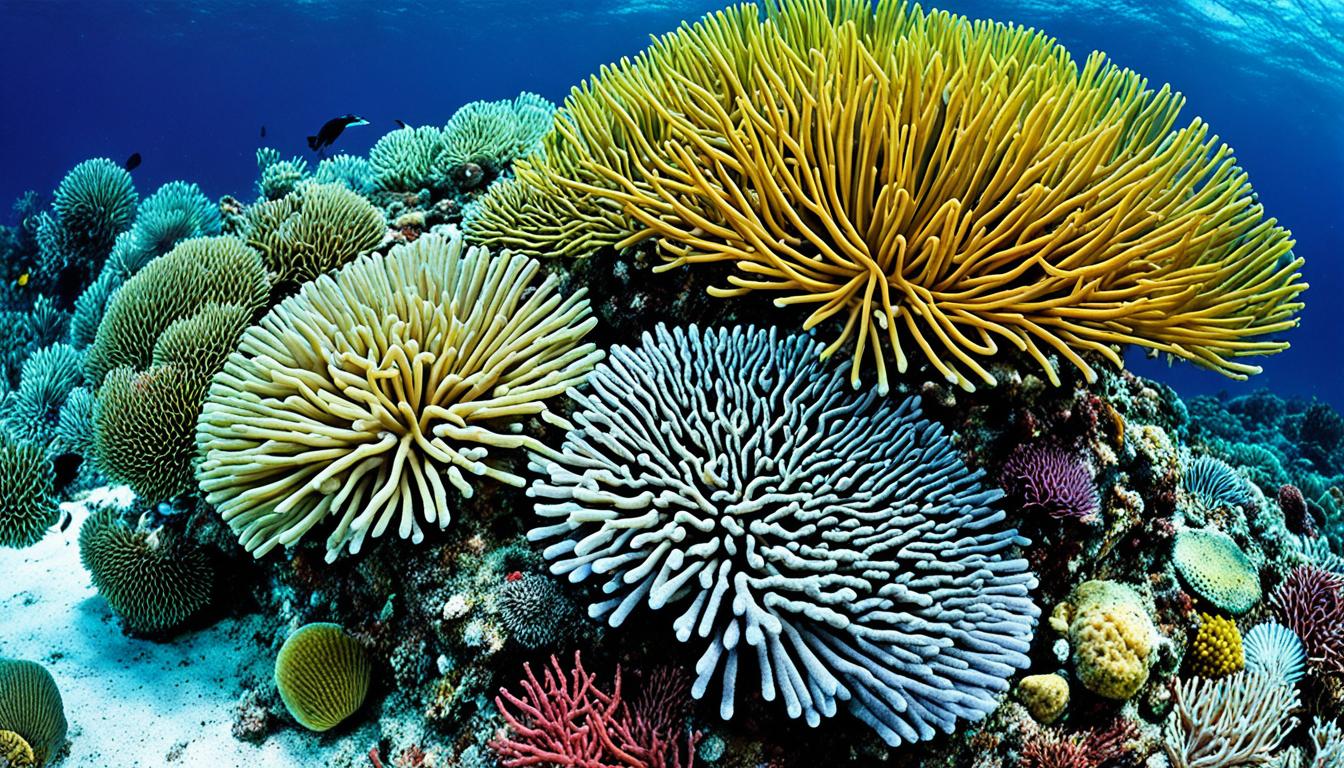Sea lions are amazing marine mammals in the family Otariidae. They are different from seals because they can stand and walk on their long flippers. You might ask, where do sea lions live? They live mainly in coastal areas, resting on rocky shores and sandy beaches.
These remarkable animals live in various places, often hunting in the warm Pacific waters. As you look into their homes, you’ll see they live from the Pacific Coast beaches to remote islands. Sea lions show how adaptable and versatile marine mammals they are.
Understanding Sea Lions and Their Species
Sea lions are amazing marine mammals with unique traits and lively social lives. Their sea lions characteristics make them stand out. They have external ear flaps, long front flippers, and love to play together in big groups. They play a key role in the ocean as both hunters and food sources for others.
Characteristics of Sea Lions
Sea lions are known for their agility and smarts. They move through the water with ease thanks to their strong, flexible flippers. They live in colonies for safety and company. Their sounds, like barking and growling, help keep their social bonds strong.
Species Overview
There are six types of sea lions, each with its own special traits and ways of living. Here’s a quick look at them:
| Species | Habitat Range | Population Status | Notable Characteristics |
|---|---|---|---|
| California Sea Lion | Alaska to Costa Rica | Stable | Social and adaptable |
| Steller Sea Lion | Northwestern U.S. to Russia | Declining | Largest species, with a broad diet |
| Australian Sea Lion | Coastal Australia | Vulnerable | Distinctive face markings |
| South American Sea Lion | Coastal South America | Stable | Known for territorial behaviors |
| New Zealand Sea Lion | Coast of New Zealand | Endangered | Unique breeding habits |
| Galápagos Sea Lion | Galápagos Islands | Stable | Very social and playful |
These species show the wide range within the sea lion family. Each one is adapted to its own environment and challenges.
Where do sea lions live?
Sea lions live all over the world, in many coastal areas. They have a wide range of places they call home, which is key to their survival. Knowing where sea lions live helps us understand how they fit into their environments.
Global Distribution of Sea Lions
The Californian sea lion lives along the Pacific coast of North America. It goes from British Columbia to Mexico. This sea lion is known for being playful and living close to people.
The Australian sea lion lives on the southern coast of Australia. It likes islands and beaches. The Steller sea lion is the biggest and lives from the Bering Sea to Alaska and Russia. It prefers rocky areas and safe bays.
Sea lions have adapted to different places. They can be found on rocky coasts or sandy beaches, depending on the season. Keeping their homes safe is important for their survival.
Sea Lions’ Natural Habitat
Understanding where sea lions live is key to protecting them. They live in coastal areas perfect for resting and breeding. Their homes greatly affect their behavior, how well they reproduce, and their health.
Coastal Regions and Breeding Sites
Sea lions like coastal spots with sandy and rocky places to rest and breed. These spots are important for resting and having babies. Every year, they go back to the same sea lion nesting sites to have their babies and take care of them.
The Channel Islands are a safe place for Californian sea lions to live together. They need enough space and safety from predators to breed.
Marine Habitats
Sea lions also need the ocean for survival. They are great divers, hunting in waters full of food like squid and small fish. These waters help them eat and interact with other sea creatures, which is key to their survival.
| Habitat Type | Characteristics | Importance |
|---|---|---|
| Coastal Regions | Sandy and rocky haul-out sites. | Breeding and resting areas. |
| Breeding Sites | Safe locations for young. | Protection from predators. |
| Marine Habitats | Nutrient-rich waters. | Abundant food supply. |
Sea Lion Territory and Population Distribution
Sea lions have complex social lives that help us understand their behavior and how they live together. They have strong territorial instincts, especially when it’s time to breed. Males gather a group of females in specific areas called rookeries, which are their main places for breeding.
The fact that females come back to the same spot every year shows how important these territories are to them.
Movements and Rookeries
Sea lions move around based on where they can find food and where they need to breed. Rookeries are chosen for their safety and food availability. These sites are often picked because females like to come back to familiar places.
This helps us learn about their social and breeding habits.
Population Trends
Looking at where sea lions live helps us understand their conservation status. For example, California sea lions have grown to about 257,000 in number. This increase means their ecosystem is doing well, but they face threats from humans.
It’s important to keep an eye on these numbers to make sure we can protect them as their environment changes.
Sea Lion Living Environment
Learning about the sea lion’s home helps us see how they live with humans. They have special ways to survive, shown by their actions and how they interact with us.
Behavioral Adaptations
Sea lions have amazing behavioral adaptations to help them survive. They live in groups called “rafts” for safety and better hunting. They also use different places to rest and sunbathe, avoiding too much competition.
This shows how important these adaptations are for their survival in changing ocean environments.
Interactions with Humans
Sea lions have both good and bad interactions with humans. Tourism and fishing can disturb their homes, but careful management can help protect them. It’s key to understand these interactions to live together better and protect sea lions.
By being involved, we can help keep a balance between our activities and nature.
Key Areas and Habitats for Sea Lions
Finding the best places for sea lions is key to their survival. The Pacific Coast has areas that are perfect for them. The Channel Islands are a top spot for breeding, offering safety and resources.
San Francisco’s Pier 39 is another key spot, drawing tourists and showing off sea lions in action. The Galapagos Islands are also special, with unique sea lion populations that support a rich ecosystem.
These places are not just good for sea lions but also for ecotourism. You can see and learn about these amazing animals in a way that helps protect them. This supports conservation efforts to keep their homes safe.
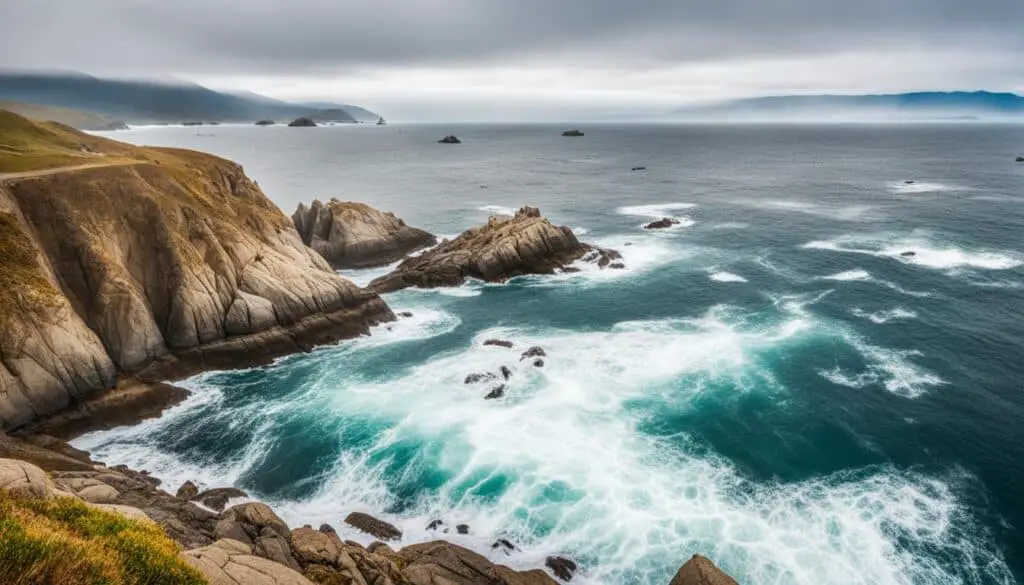
Keeping these areas safe is vital for sea lions and their homes. By understanding their importance, we help protect their populations and the ecosystems they live in.
Conservation and Future of Sea Lions
Exploring sea lion conservation shows us the many threats they face. Habitat loss, pollution, and climate change stress their populations. This makes saving them more important than ever.
Groups focused on marine mammal rescue and rehab lead the conservation charge. They provide support and resources to help sea lions survive. Through education, they teach us why it’s key to protect their homes in the ocean.
As we learn more about threats to sea lions, we can make a difference. Your help in conservation can greatly benefit these amazing creatures and their homes. By supporting sustainable actions and local projects, we can help sea lions flourish for years to come.
FAQ
Where do sea lions live?
Sea lions live in coastal areas. They like to rest on rocky shores and sandy beaches. They can be found from the Pacific Coast to isolated islands, showing their ability to adapt.
What are the characteristics of sea lions?
Sea lions stand out with their ear flaps, long front flippers, and social nature. They live in big groups and claim their territory, especially when breeding. Their ability to live in different places shows their adaptability.
What species of sea lions exist?
There are six types of sea lions, like the Californian, Australian, and Steller sea lions. Each type has its own special traits. The Californian sea lion lives from Alaska to Costa Rica, showing its wide range.
What is the global distribution of sea lions?
Sea lions live in many places around the world. For example, the Californian sea lion stays along the Pacific coast of North America. The Steller sea lion lives in the Bering Sea between Alaska and Russia.
What types of natural habitats do sea lions prefer?
Sea lions like coastal areas with sandy and rocky spots for resting and breeding. They go back to the same places every year, like the Channel Islands, which is important for their survival.
How do marine habitats support sea lions?
Sea lions live in waters full of nutrients, where they hunt for squid and small fish. These rich waters are key for their survival. Knowing about these habitats helps protect them.
What are the territorial behaviors of sea lions?
In the breeding season, sea lions claim their territories. Males gather harems of females. They always come back to the same places, which helps their social life and survival.
What are the current population trends of sea lions?
The Californian sea lion population is now about 257,000. But, they face threats from humans. We need to work on conservation to help them survive.
How do sea lions adapt to their living environment?
Sea lions live in groups called “rafts” and use different places to rest. These behaviors help them survive in the changing ocean.
What are the interactions between sea lions and humans?
Humans affect sea lions in both good and bad ways. While human actions can harm their homes, awareness and conservation efforts help us live with them.
What are the key areas that serve as habitats for sea lions?
Important places for sea lions include the Channel Islands, San Francisco’s Pier 39, and the Galapagos Islands. These spots are key for their breeding and resting. They also offer chances to see wildlife and support tourism.
What conservation efforts are in place for sea lions?
Conservation work focuses on protecting their breeding spots, fighting pollution, and climate change, and making people aware of the importance of the ocean. These efforts aim to keep sea lions safe for the future.

